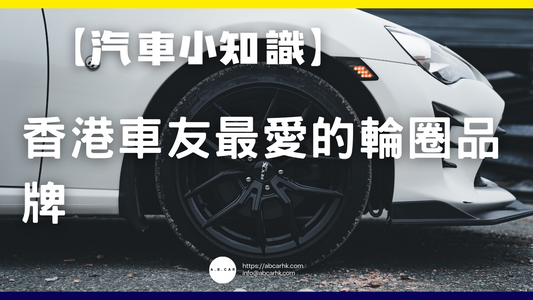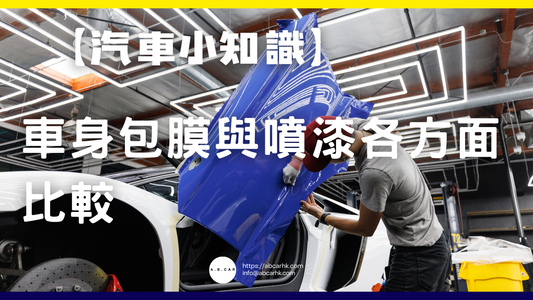[Road Trivia] Why are there "noise barriers" on some roads in Hong Kong?

🚧 Editor's in-depth analysis: Why are there "noise barriers" on Hong Kong roads?
Have you ever been driving past a highway, main road, or tunnel exit and noticed tall, transparent or colorful walls along the roadside? Some are sealed glass, others are made of metal, plastic, or even greenery. These are "noise barriers," also known as "soundproof walls" or "anti-noise walls." So why are these massive devices installed on some of Hong Kong's highways? Are they truly useful? Or are they just for decoration?
Today, the editor will analyze it layer by layer from multiple angles including science, engineering, society, law and life !
1. What is a "noise barrier"?
Noise barriers are tall walls installed next to noise sources such as roads, railways, airports, and industrial areas. They are mainly used to block and absorb traffic noise, protecting nearby residents, schools, hospitals and other "sensitive receptors" from noise nuisance .
- Common materials in Hong Kong: transparent acrylic sheets, metal, soundproof concrete, sound-absorbing aluminum panels, green plant walls, etc.
- Common heights range from 2 meters to 10 meters, with some heights higher (e.g. overpasses, along sloped roads).
2. Why do some roads in Hong Kong need noise barriers?
1. The city is extremely dense, with roads close to residential areas.
- Hong Kong has a small land area and a large population, so residences, schools, hospitals and nursing homes are often very close to major roads, highways and interchanges .
- The traffic volume on the highway is heavy (tens of thousands to hundreds of thousands of vehicles per day), and the noise can easily enter residential areas, affecting the quality of life.
2. Traffic noise has a significant impact on health
- Long-term exposure to high noise environments can affect residents' physical and mental health , leading to:
- Decreased sleep quality
- Reduced concentration among students
- Recovery of the elderly and patients is hindered
- Long-term increased risk of cardiovascular disease
- The World Health Organization (WHO) has confirmed that "traffic noise" is a potential health hazard in cities.
3.Legal and urban planning requirements
- According to the Noise Control Ordinance (Cap. 400) and related environmental impact assessment regulations, new construction or expansion of roads must undergo an environmental impact assessment (EIA) to assess the traffic noise generated.
- When the assessment results show that "sensitive receptors" will be affected by noise levels exceeding the standard, the engineering unit must design effective mitigation measures , such as installing noise barriers, noise-proof windows, green belts, etc.
- Otherwise the project will not be approved and the design may even have to be modified!
4. People’s Livelihood Demands and Social Pressure
- Hong Kong residents have high demands for quality of life. Once there is a new highway or widening project, nearby residents will actively ask the government to "install noise barriers" to protect their living environment.
- The Legislative Council, District Councils and community organizations will all strive for relevant facilities.
3. Design principles of noise barriers
1. Block the direct transmission of sound
- The main principle of noise barriers is to block vehicle noise from propagating in a straight line to the "receiving point" , namely residential areas, schools, hospitals, etc.
- When sound encounters a high wall, it will be reflected, absorbed, and diffracted, greatly reducing direct noise.
2. Absorb noise energy
- Modern noise barriers are mostly made of sound-absorbing materials (such as sound-absorbing aluminum panels, mineral wool, etc.), so that some sound waves are absorbed by the wall, reducing the reflection back to the road or other buildings.
3. There is a science to designing shapes
- Some barriers are designed into "meniscus", "arch", "top", etc. to further enhance the sound insulation effect.
- Height, length, and distance from the noise source will all affect noise reduction effectiveness.
4. Effects and Examples of Noise Barriers
1. Significant results
- According to data from the Transport Department and the Environmental Protection Department, properly designed noise barriers can reduce noise by 10-20 decibels , which is equivalent to reducing the noise level from "extremely noisy" to "normal conversation" for residents.
- Effectively improve sleeping, learning and working environment.
2. Hong Kong’s practical example
- Island Eastern Corridor (Fortress Hill area) : High-density residential buildings are located on both sides, and a large number of transparent soundproof walls are installed to effectively reduce noise while maintaining light.
- Tseung Kwan O Tunnel Road : There are many housing estates along the road, and the noise barriers are designed in a curved top shape to block the noise of traffic.
- Tsing Ma Bridge approach bridges, Tolo Highway, Tuen Mun Highway, and Cheung Tsing Tunnel entrances and exits : Noise barriers of varying heights and materials are installed in multiple sections, combined with greening to achieve dual noise reduction.
5. What special features do Hong Kong’s noise barriers have?
- Transparent design : avoids blocking the view and sunlight, and improves the beauty of the city (especially near residential areas).
- Green walls : Some new soundproof walls are planted with climbing plants to beautify the environment and absorb air pollutants.
- Sustainable Materials : Made from recyclable, durable materials to reduce maintenance costs.
6. Common Misunderstandings
1. Are noise barriers useless?
- Wrong! According to tests, correct design can reduce noise by 10-20 decibels, effectively improving the environment.
- If the design is not suitable, or it is too low or too short, the effect will not be so good.
2. Will the noise be reflected to the building opposite?
- It's possible! That's why modern designs often use sound-absorbing materials and curved roofs to reduce reflections.
3. "Just pretend it and you'll be done with it once and for all?"
- No! Clean and maintain the sound-absorbing material regularly to ensure it is not damaged.
7. Why aren’t all roads equipped with it?
- High cost : tens to hundreds of thousands of yuan per meter, and even more expensive over long distances.
- Some locations do not have sensitive receptors : for example, highways passing through mountainous areas and industrial areas will not be installed if there are no residential areas.
- Visual and spatial limitations : Some areas are not suitable for high walls as they would affect safety or the city view.
- Retrofitting old road sections is difficult : it is not easy to modify the structure and requires maintenance or widening works.
8. Editor’s Tip: What should you do if your home is near a noisy highway?
- Strive for the installation of noise barriers : You can report to the District Council, Transport Department and Environmental Protection Department.
- Apply for subsidies for soundproof windows : Some projects will subsidize the installation of soundproof windows.
- Plan your home layout properly : place the bedroom as far away from the road as possible.
IX. Summary
The installation of noise barriers on some Hong Kong roads is primarily driven by the city's high density, heavy traffic, and significant noise issues . These barriers effectively reduce noise impacts on sensitive areas such as residential areas, schools, and hospitals, improving quality of life and protecting health. These barriers are the result of a concerted effort driven by legislation, urban planning, and public opinion.
Every time you pass by a soundproof wall, you are not just seeing a wall, but Hong Kong’s persistence and efforts in pursuing a healthy lifestyle!
If you have any other questions about Hong Kong's transportation infrastructure, urban design, or everyday life, feel free to leave a message and ask us! We'll share more stories behind the scenes of urban development next time! 🚧👷♂️



